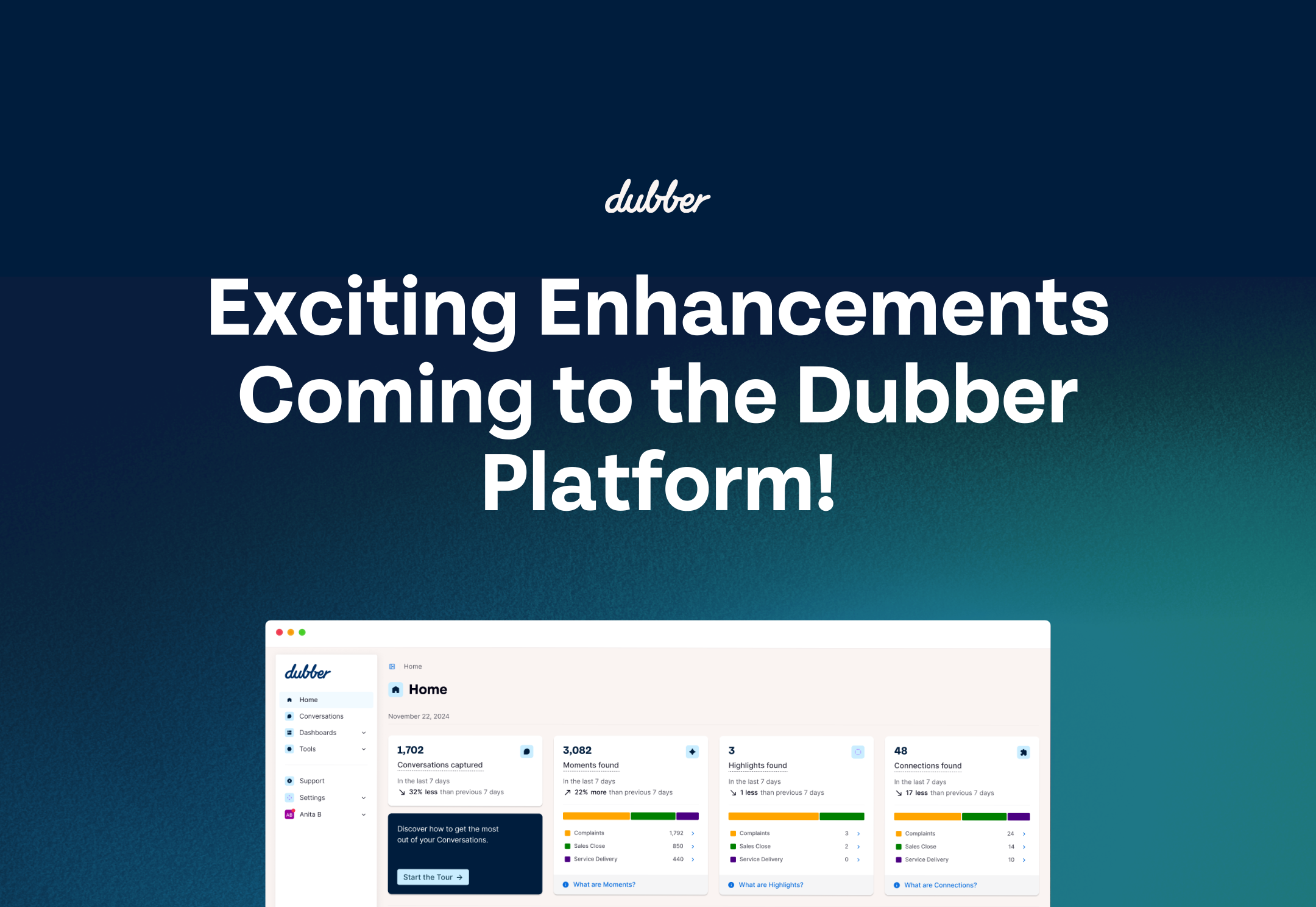
Our cloud call recording is now available for immediate signup for all customers on the Sprint® Smart UC service. With 53.9 million connections, that’s a huge number of users who can start to reap the benefits of recording their calls in the cloud.
The cloud-based unified communications (UC) service eliminates the need for traditional on-premise equipment and capital expenditure for business customers and so is a natural fit for our software as a service (SaaS) products. Their affordable unified communications as a service (UCaaS) solution allows users to combine their business phones and collaboration apps in one UC service. The solution helps to improve productivity by amalgamating carrier grade voice services with high definition video, desktop sharing, instant messaging and email.
Just as our cloud call recording is designed with small businesses in mind, Sprint® Smart also offers a service that is perfect for small and medium enterprises. As a cloud service, the need for upfront investment in on-premise hardware provides flexibility for businesses. Users can be added and removed on a monthly basis, through an easy-to-use online portal, and our call recording services can be added and adjusted in the same way.
Dubber call recording, as standard
With our cloud call recording available as a standard value-added business feature for all Smart UC customers, our CEO Steve McGovern commented: ‘We are very proud to be working with Sprint, a globally recognised leader in the telecommunications industry.” You can read more from Steve in the full ASX announcement below.
To find out how to add value to your business with call recording, speak to a member of our team today.

Dubber Call Recording Capability Available on Sprint Smart UC Platform
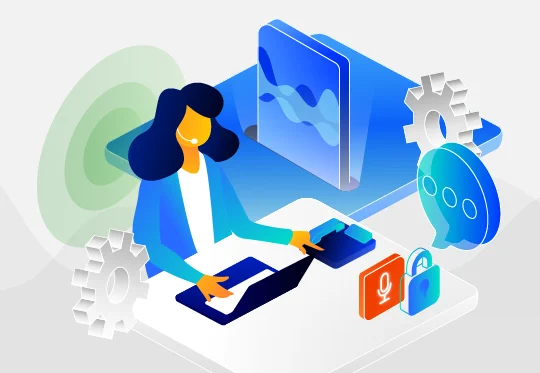
The way we communicate has changed. While we still talk to each other over the telephone, the technology that transmits this communication has moved on. The telephone has its origins in cable networks, but today businesses and individuals often use telephones powered by the internet instead. This is called voice over internet protocol (VoIP), and is a way to transmit voice calls without using analog phone technology. VoIP transmits conversations via the internet, rather than through phone lines. Using VoIP has a number of advantages, including lower costs. In order to capture the data held within VoIP calls, you must be able to record them. We have written about different methods of recording VoIP calls, but here is an overview of how to record VoIP calls.
How can you record VoIP calls?
VoIP calls can be captured through passive or active recording. Passive recording uses tools that ‘sniff’ the packets of voice data, while active recording uses software that ‘listens’ to the conversation. Recording doesn’t require any special equipment or software, as it is managed by the vendor. Recorded calls are saved as audio files and stored for future reference or playback.
A business or individual can switch on VoIP call recording at any time, and start recording almost immediately. Different providers offer various features, such as controls that determined which calls are recorded, as well as announcements to inform callers that their call will be recorded. Organisations can enable call recording for everyone in a department, or only certain employees and these settings can be changed at any time. Call recording can be automatic, or user-initiated — meaning all calls can be recorded, or a user can choose to record a call.
Why should you record VoIP calls?
VoIP calls can be recorded without using any special equipment or software required on the premises. Recorded calls are saved as audio files and stored for future reference or playback. Certain industries are regulated by legislation that requires calls to be recorded, while many organisations choose to record their calls for quality assurance and training purposes. Many industries have regulations that require organisations to record their calls, and failing to be fully compliant with these regulatory directives can result in costly fines. Keeping up-to-date with an efficient call recording solution is essential for compliance, but this is just the beginning of what can be achieved with call recording.
Recording VoIP calls can also allow organisations to create better training experiences. With a better understanding of common customer queries, achieved through replaying calls, staff across a whole business are better placed to help customers. Other benefits of recording calls include improved order confirmation and dispute resolution, as well as churn reduction. Traditionally, only large enterprises could afford to record their calls, but cloud solutions are making call recording more affordable for smaller businesses.
How to choose a VoIP call recording provider
There are a range of factors that you must consider when choosing a VoIP call recording provider. The quality of the recording will vary depending on the method used to record the call. For the best playback quality, calls should be recorded at the same quality of the original call. The output format of recordings is also an important consideration. An audio file should preserve sound quality, while retaining security. Call recording should also be accessible, both financially and through an easy-to-use interface that is user friendly.
Our cloud call recording platform offers an accessible way to easily retrieve and replay any recording. With unrestricted scalability, businesses can record huge call volumes and retrieve any recording, no matter when it was recorded. We also offer secure sharing functionality; where recordings can be shared via emails containing expiring links. No files are downloaded, ensuring the security of the recorded conversation.
Want to start recording your own VoIP calls to reap the benefits of capturing all that valuable voice data? Talk to one of our team today.

The fourth instalment of our Fourth Industrial Revolution series explores the evolving expectations of customers and how digital experiences will change over time. Part one of the series introduced the Fourth Industrial Revolution, part two examined intuitive networks and the future of cloud and 5G technology within the telecommunications industry, and part three investigated how telecommunications service providers will need to diversify their offerings in order to stand out from the competition.
Customer expectations have evolved alongside the development of technology, as businesses digitally enhance the customer experience. The high quality service and convenience afforded by technology is now seen as standard by consumers, who are demanding personalised services on demand. They are also expecting a seamless experience across channels, with hassle-free payment and deployment options.
Customer expectations within telecommunications
The telecommunications industry is plagued by customer churn and the costs associated with acquiring new customers. Encouraging customer loyalty is a great way to increase revenue, so telecommunications service providers will need to look for new and innovative ways to retain customers. This may require service providers to reassessing the expectations of their customers and developing digital tools in order to better support the customer journey at every stage and enhance their overall experience.
Telecommunications service providers are well placed to deliver personalised products and services to their users chiefly due to the amount of data they have. New technologies will enable companies to deliver these at scales previously impossible or unimaginable. Smart algorithms will be able to analyse customer data in real time to deliver personalised products and services to entire customer bases at once. We are already seeing this customisation with TV streaming services that learn from user behaviour. In the future, this personalisation will be automatically created using artificial intelligence, and a mix of predictive analytics and real time data.
Customer service is key
Peer recommendations are becoming increasingly important in the decision-making process, even more so than media product reviews. Negative reviews tend to reach a larger audience than positive reviews, meaning high quality products and excellent customer service are more important than ever. 61% of customers switched providers due to disappointing customer service, according to a recent study by Accenture.
Personalised experiences have been shown to engage customers, and the telecommunications industry should be asking how it can deliver such experiences to all users. This could be customising bandwidth supply according to a user’s individual data usage to meet a particular price point, or through the delivery of digital services and applications that have been personalised to each user such as telecommunications or utility providers offering plans to customers based on their usage. Reactivity and agility will be important qualities in the race to keep up with an evolving digital environment and changing customer expectations.
An improved and efficient customer experience
Digital tools will not only help telecommunications service providers to create personalised customer experiences, they can also help to reduce costs and grow revenue. Increased customer engagement reduces churn1; lowering the need for hefty spend on customer acquisition and marketing. Targeted offers including cross selling and/or bundling that appeal to the specific needs of customers should increase customer revenue and loyalty.
Customers expect to be able to find the information they need to make an informed decision when purchasing a new product or service. With more intelligent business communications solutions, customers should be directed to the department or information they need faster — increasing first call resolution and reducing customer service costs. This is significant when customer service can account for up to 10% of total operating costs. A report by the World Economic Forum has predicted that such a reduction in customer services and marketing costs, and the associated IT expenditure, could generate up to $18 billion in additional operating profits by 2025.
In the fifth and final part of our Fourth Industrial Revolution series we will explore what telecommunication service providers need to do in order to provide for the new digital workforce.
1 Del Rowe, S. (2019) ‘Vertafore Ensures Great CX with NewVoiceMedia’, Customer Relationship Management, June, p34.
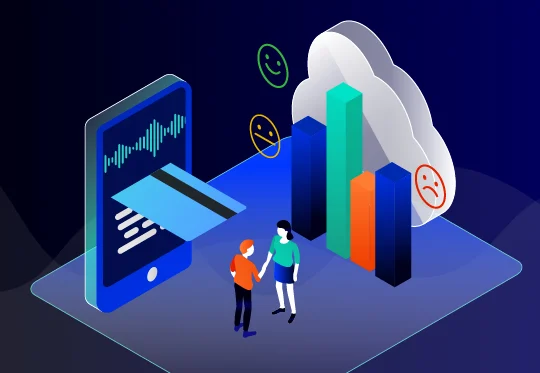
Our September quarter was a period characterised by growth: with expansion across sales, and new roles filled in Australia, Europe and North America across marketing; development; compliance; and support. This enhancement of the team will be instrumental in meeting our current priorities: providing call recording and voice AI (artificial intelligence) services for the Cisco Webex Calling platform, driving growth of mobile call recording in Australia, furthering our USA expansion with tier one carriers, rolling out a global artificial intelligence initiative, and continuing to develop our global distribution and reseller network.
Our key highlights for the period:
- Revenue increased by 6% from the previous quarter to $2.15m, up 200% on the previous corresponding period (PCP).
- End user subscriptions increased by 23% to over 117 000, up 165% on the PCP.
- 113 agreements were made with service providers and 52 service providers reached billing stage.
- Contracted annualised recurring revenue at 30th September was $10.2m.
- Cisco Webex calling launched Dubber as their recording service 31st October.
We are strongly positioned to expand on our leadership in cloud call recording and data capture in traditional unified communication networks, fixed-mobile converged networks, and UCaaS networks.
Cisco Webex Calling
Cisco Webex Calling is a multi-tenant, cloud-based alternative to an on-premise PBX, and is available as a subscription service. In preparation, we achieved ISO 27001 compliance: a globally recognised standard for information security management systems. The service is now live and will be available via the Cisco order entry system.
Mobile and ‘whole of business’ recording
Businesses are now looking beyond call recording for compliance, and seeking mobile recording services and insights on customer interactions across the whole business. We are working towards a service that will provide widespread availability across Australia. During this preparation we have completed an agreement with Schepisi Communications and have been awarded the Telstra Enterprise Mobility Carriage Partner of the Year for 2019.
Continued momentum
Dubber co-founder and CEO Steve McGovern commented on the September quarter results:
“Fundamentally, we have scaled our operations from a ‘Founder led’ company to one which is able to execute on the opportunities which are in multiple jurisdictions.
We are pleased with our momentum towards facilitating widespread uptake of the Dubber platform as a mobile or fixed mobile converged offering. The Company believes that there is significant immediate demand for these services and activation of the initiatives should see user uptake and revenues grow strongly.
Our AI programs are continuing to gain momentum with our large partners like IBM. We are seeing strong increases in the number of enterprise customers, particularly in North America, that are interested in garnering business insights. We believe that gaining access to real-time voice calls on an enterprise-wide basis will be a strong business driver for us in 2020.
Throughout the remainder of FY20 we will continue to procure additional key carrier agreements, accelerate their time to billing and add new channel and systems integrator agreements to build out the global backbone of call recording. These are the foundations of growth for the next term and we are now ready to execute on these with the team we have in place.”
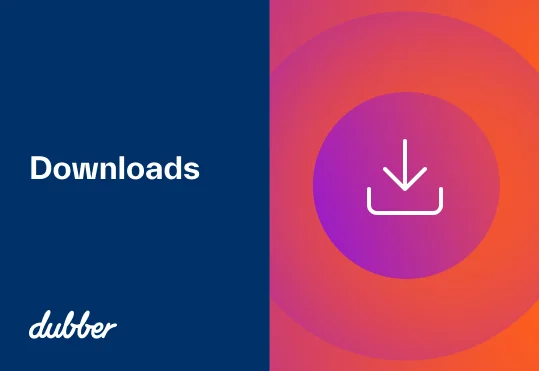
Dubber Live as Cisco Webex Calling Call Recording Platform

The digital workforce is an increasing reality for enterprises, and now is the time to move from on-premise unified communications solutions to cloud-based UCaaS. Future cloud unified communications offerings will have enhanced features, including dashboards and analytics.
No more being tied down
According to Gartner, by 2021 90% of IT leaders will not purchase new on-premise unified communications infrastructure1. With UCaaS solutions providing the same, or better, functionality; such as voice, meeting and messaging services, as well as unified clients and integrations, the only change is the delivery method. Cloud deployments of communications services removes the need for on-premise equipment, and the associated investment of time and money required.
Our call recording and voice AI services are designed to integrate with UCaaS solutions, while our cloud platform has been specifically architectured in order to provide secure, scalable storage that is flexible enough to adapt to the needs of an enterprise.
Digital transformation and disruption
Moving to the cloud is a huge step on the journey to digital transformation. By removing the restrictions of physical hardware, enterprises increase their potential to disrupt their industries and expand their horizons. Cloud communications enable expansion; not just in size, but also in location. Cloud storage can scale alongside the growth of an organisation, with no worries of ever running out of space, while deployment through global data centres means new locations can be added easily.
The cloud also facilitates agility: with a faster speed of innovation, businesses are able to quickly react to trends and capitalise on new opportunities with faster deployment of communication services.
Relief from app overload
With our open API, data from recorded calls can be integrated into business tools. It’s even possible to manage our services through existing systems, meaning one less application open on a desktop. Visit our API page to find further information on what our API can do.
If you want to learn more about how a move to the cloud can help your business get ahead of the competition, get in touch with one of our team.
Sources
1Gartner (2018) Magic Quadrant for Unified Communications as a Service Worldwide.

The third part of our Fourth Industrial Revolution series investigates the ways in which telecommunications service providers will expand their offering beyond phone calls. Part one was an introduction to the Fourth Industrial Revolution, describing the latest wave of digital development; and part two explored intuitive networks and the ways in which cloud technology and 5G will transform telecommunications.
Telecommunications service providers have already adapted to changing consumer demand, adjusting their revenue streams in order to succeed in an evolving marketplace. Data has been important, and a further shift to an internet-based business model will be an opportunity for future revenue growth through the currency of data. The internet of things (IoT) will be a key part of this strategy, with the deployment of sensors, and the potential of analytics and machine a significant revenue opportunity.
New revenue streams
How we work and communicate will be shaped by forward-thinking service providers who provide new services at a low connection cost. Telecommunications service providers are at a significant advantage, due to their existing connectivity and subscriber base. More subscribers mean more data, and those with the analytical capabilities will be able to harness the value held within this data. The telecommunications operators who will succeed will be those with expanded offerings that include cloud-based services such as analytics, system integrations, and APIs that can compete in a crowded marketplace. Their competition will be technology companies and agile startups, so innovation will be key. Service providers will need to ensure that they are not held back by legacy processes, as quick reactions will be vital. Radical change may be in order at board and CEO levels to capitalise on the huge potential for revenue.
Possible areas for development by telecommunications service providers include video and entertainment services, on-demand information services such as maps or booking, retail, mobile financial services, and virtual care provision services for healthcare providers. It is predicted that these new revenue streams could generate up to $142 billion over the next decade and could contribute 15% of total revenue by 2025. New opportunities will also be available in existing spheres covered by telecommunication service providers, such as information security, enterprise mobility management, unified communications, cloud services, and analytics. These areas on their own could contribute an additional $48 billion in profits for network operators and equipment suppliers. These new revenue streams will also create new jobs in order to support service delivery across consumer and enterprise applications.
Disrupting the industry
In order to meet new consumer demand and cement their place in the market, telecommunications service providers will need to recruit digitally-minded workers with implementation knowledge who can drive innovation. Competition will be fierce, and it is predicted that acquisitions and partnerships will be key to driving growth and establishing a place in the market. Scalability will be key for platforms, as well as the integration of front and back end systems, in order to offer a range of products and services to consumers.
With existing infrastructure already in place, telecommunications service providers are well-placed to offer a range of technology-based services to compete with digital service providers. This infrastructure will allow them to disrupt other industries. In a recent survey across global operators, almost a quarter of companies reported that they expect digital services across consumer and enterprise applications to account for more than 25% of total revenues by 2020. The development of new services that are relevant to users will improve customer service, a desirable outcome considering even a 0.5-1% reduction in churn annually has the potential to generate up to $10.3 billion over the next decade. By prioritising customer convenience and value creation, service providers could drive up to $170 billion through time and cost savings for their customers
Environmental impact
The potential travel reduction brought about by these new digital services could see a decrease in carbon emissions of more than 80 million tonnes. Virtual healthcare alone could reduce emissions by 63 million tonnes by allowing patients to speak to doctors in the comfort of their own homes.
Emerging technologies
Technological developments such as augmented reality (AR) and virtual reality (VR) have the potential to change how we communicate with not just each other but the world around us. They could even herald new devices. By 2030, the PC will be 50-years-old and the smartphone almost 15: the future could hold new communication devices and see a move away from screens. A focus on emerging technologies can capture significant value. AR and VR could reshape the ways we receive medical care or go shopping, and confidence in these technologies is already strong, with funding deals for AR and VR reaching $1.1 billion as far back as 2016. Applications of these technologies will be much more varied than their existing use in gaming, with a variety of commercial and industrial applications including healthcare, retail, logistics, real estate, manufacturing, security, training, and data analysis. AR and VR have the potential to evolve how people communicate, learn, work, and consume.
In the fourth part of our Fourth Industrial Revolution series we will explore the future of customer retention; looking at the evolving expectations of customers and the ways in which digital experiences will change over time.
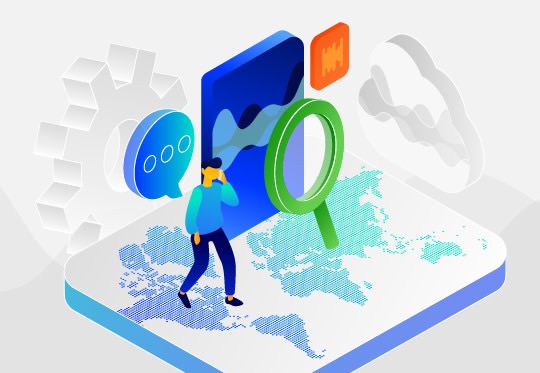
Our cloud storage sets us apart from other call recording service providers by offering a scalable platform for growing businesses. As a native cloud call recording solution, we offer a range of storage options to adapt to the needs of service providers and their customers. We built the Dubber platform in the cloud to offer unlimited scalability to our customers. What does this mean in practice?
Flexible options
Scalability offered by the cloud provides flexible approaches to user counts, processing capacity, and storage. Combined, these allow us to provide products and plans tailor-made for service providers.
Perpetual retention
A common challenge for on-premise solutions is that their sizing was undertaken at time of installation. As a business grows in both users and usage, a challenge can arise where the volume of daily new call recordings is beyond prediction. This forces administrators to balance which services are being recorded and the length of time to retain each recording.
This approach to retention is just not adequate in the real world, especially when regulations such as MiFID II require calls to be stored for five years. The Dubber platform has the capability to securely store large volumes of calls in perpetuity, giving organisations the tools they need to comply with the regulations of their industry.
SaaS
Our Software-as-a-Service model allows us to offer a range of subscription options to telecommunications service providers and their customers. Want to cover call recording for compliance and contact centres but also offer packages with less commitment that introduce a whole new customer base to the benefits of call recording? Dubber has you covered. We offer low-cost and commitment-free packages with shorter storage periods that can be supplied alongside standard reserved call recording packages that require perpetual storage.
Unrestricted storage
As well as long-term options, the Dubber platform can also accommodate large call volumes. The unrestricted storage provided by the cloud allows for vast numbers of concurrent calls to be recorded. Dubber’s true cloud storage allows the solution to scale alongside a business during busy periods, and there are never any concerns about running out of space. Calls are always available instantly and are easily searchable.
Security
Dubber is a native cloud platform, with an architecture specifically designed to provide maximum security for the recording data of all our users. The Dubber platform utilises sophisticated security systems, leveraging cutting edge cloud technologies to provide a highly secure and scalable call recording solution. All data is stored within our platform under AES-256 bit encryption, providing best-in-class security. The platform offers true cloud multi-tenancy architecture, ensuring separation of all customer data.
Get in touch to find out how the Dubber solution can scale to suit your business, contact us here.

June 2019 Appendix 4G

